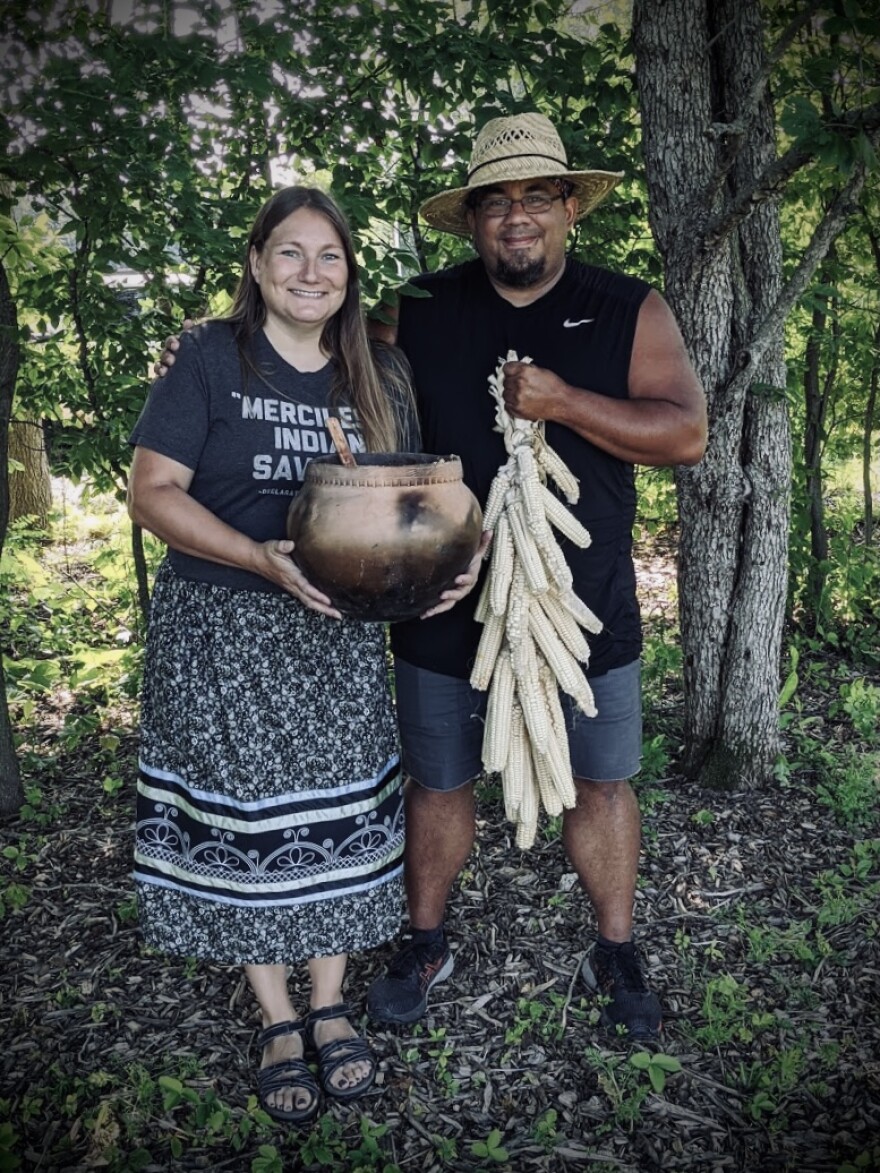In the Oneida language, yukwanénste has two meanings: “our corn" and “our precious.” It’s a testament to corn’s importance: Throughout time, corn has been a staple in the Oneida diet and an important part of daily and ceremonial life.
When the Oneida people were forcibly removed from present-day New York state to the reservation in northeastern Wisconsin, they brought corn seeds with them. Among them would have been Tuscarora white corn, a pearly-white flour corn with eight rows of round kernels. Saving those seeds — and the knowledge to cultivating them — is a tradition that has been passed down for generations.
In Our Precious Corn, Rebecca Webster explores the relationship between Oneida people and corn. Webster is a citizen of the Oneida Nation of Wisconsin. She and her husband own a farmstead on the reservation, where they grow corn, and other Indigenous varieties of beans, squash, and sunflowers. They use their farm as a place to share their knowledge and teach community members how to reconnect with Oneida foodways. Webster is also a founding member of the Ohe-Láku corn-growing co-op.
On the importance of corn
Corn is the eldest of the three sisters, and she's the leader of those garden plants. In so many ways, she has led us throughout all of our history. We didn't start growing our Indigenous foods until 2015. We talked about growing our foods for a long time. It just wasn't feasible while I was in college. Then I came back, had children right away. Finally, we just said we need to do this. We were really swept away by how much this food has connected us to relatives out east and connected us to people within our community. It's brought us back to our language, to our culture, to our history. Corn has just really led the way for a different lifestyle. We are so much happier because of it.

On researching the book
I really had a wonderful time digging in the archives, trying to find stories and instances when our people talked about corn or corn was relevant at pivotal moments in our history. And then to gather all that information and then go out into the community, and ask the community their perspectives of our history, their relationship with growing the corn, eating the corn, childhood memories. You expect to hear certain things when you're going out there because you've done your research and you grow the corn yourself. But it was so much more than I could have ever anticipated. I was so happy to be able to weave their stories throughout our history in this book, and to be able to share them back with the community.
On preserving and sharing knowledge

My husband and I were both raised in this community, but we didn't have access to a lot of that knowledge. When we decided to grow our foods again, there weren't a whole lot of places that we could go to to figure out all of the things that we wanted to learn about. There were people in our community that did share some knowledge with us. We did go out east to gather knowledge there. So we gathered knowledge from all over the place and even in the historical record about how we had traditionally grown our foods.
When we were looking, sometimes there was shame and embarrassment because we didn't have the answers. Because we didn't know about these foods, we didn't know what seeds we had, how to best grow them. Because that knowledge had been taken from us through colonization, assimilation, and removal. And it took a lot of work to learn what we know now. We wanted to create a safe space for people to learn with us, so they don’t have to be embarrassed that they don't know these things already. And also for our seeds to come home to a safe space for those to grow. And then we can turn around and share them with the community as well.
On the future of corn
We saw during the pandemic, how the food chain just collapsed and was unstable. We ended up getting through that, but we saw the weaknesses and our reliance on being able to go to the grocery store and have the foods that we're accustomed to be there and be available. I think by taking control and growing more of our own foods — especially foods that our bodies were meant to eat and not the highly processed foods that are available in the grocery store — that is a way to help us not only get healthy again, but to be secure in where our food comes from comes from to know what's in that food and to know that it has historical and cultural connections to us as a people.

On seed-trading during the pandemic
That was really great because we didn't really want to be talking to people face-to-face. We would arrange times that they would come and we would set out little seed packets on the front porch. Then I'd get a message. Then we’d go out there to see what prizes were there. Sometimes it was a jar of jelly, sometimes it was honey. I think one time somebody even left an elk roast which was so amazing. There's all these little gifts that we would be trading our seeds for.
As the season went on, these folks had all kinds of questions and it was really empowering to finally be in a position where, “Oh my gosh, I know that. I can help you!” Instead of always being the one who's asking questions and needing help. Then, they'd send videos or pictures of their growing gardens. I just felt like a proud grandma looking at all these things. It was just so nice to see them and to see them be so happy in reestablishing those relationships with our Indigenous foods.
_






